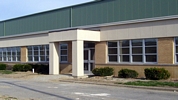|
|
 Acne (1,500) Acne (1,500)
 Addictions (1,500) Addictions (1,500)
 Advice (1,500) Advice (1,500)
 Allergies (1,092) Allergies (1,092)
 Alternative Medicine (1,500) Alternative Medicine (1,500)
 Anti Aging (1,500) Anti Aging (1,500)
 Breakup (1,500) Breakup (1,500)
 Cancer (1,499) Cancer (1,499)
 Dental Care (1,500) Dental Care (1,500)
 Disabilities (1,500) Disabilities (1,500)
 Divorce (1,500) Divorce (1,500)
 Elderly Care (1,498) Elderly Care (1,498)
 Goal Setting (1,500) Goal Setting (1,500)
 Hair Loss (1,500) Hair Loss (1,500)
 Health and Safety (1,497) Health and Safety (1,497)
 Hearing (1,500) Hearing (1,500)
 Law of Attraction (1,499) Law of Attraction (1,499)
 Marriage (1,500) Marriage (1,500)
 Medicine (1,497) Medicine (1,497)
 Meditation (1,499) Meditation (1,499)
 Men's Health (1,500) Men's Health (1,500)
 Mental Health (1,500) Mental Health (1,500)
 Motivational (1,500) Motivational (1,500)
 Nutrition (1,495) Nutrition (1,495)
 Personal Injury (1,499) Personal Injury (1,499)
 Plastic Surgeries (1,500) Plastic Surgeries (1,500)
 Pregnancy (1,496) Pregnancy (1,496)
 Psychology (1,500) Psychology (1,500)
 Public Speaking (1,500) Public Speaking (1,500)
 Quit Smoking (1,500) Quit Smoking (1,500)
 Religion (1,499) Religion (1,499)
 Self Help (1,500) Self Help (1,500)
 Skin Care (1,500) Skin Care (1,500)
 Sleep (1,500) Sleep (1,500)
 Stress Management (1,500) Stress Management (1,500)
 Teenagers (1,492) Teenagers (1,492)
 Time Management (1,500) Time Management (1,500)
 Weddings (1,500) Weddings (1,500)
 Wellness (1,500) Wellness (1,500)
 Women's Health (1,500) Women's Health (1,500)
 Women's Issues (1,500) Women's Issues (1,500)
|
One of the most common afflictions of the baby boomer generation is osteoarthritis of the knee (OAK). Up to 20 million Americans may suffer from this condition.
OAK develops as a result of degradation of the articular cartilage. Articular cartilage is the smooth lining or gristle that covers the ends of the leg bones where they meet to form the knee joint. The cartilage provides a smooth surface for the joint to move and also functions to cushion the knee with impact.
The layer of bone underlying the articular cartilage is called subchondral bone.
Osteoarthritis is a complex process that involves both inflammatory as well as mechanical factors. Initial joint inflammation leads to chemical changes within the cartilage that leads to premature wearing away. When the articular cartilage wears away, the bone underneath is uncovered and rubs against bone. Small bone spurs or osteophytes may form in the joint as a result of mechanical factors.
The primary symptoms of OAK include pain, stiffness, and swelling. Patients may complain of stiffness in the knees with prolonged sitting. They may also experience pain in the knees at night. Occasionally clicking or short term locking may occur.
So what treatments are available now and what is going to be available in the future?
Unfortunately, at the present, most of our treatments currently are aimed at symptom control because we do not yet have therapies that reliably and convincingly slow down or reverse cartilage deterioration.
Physicians may prescribe medicine to help control. Acetaminophen (Tylenol) is a mild analgesic (pain reliever) with few side effects if the drug is not taken on a chronic basis. Some people may also get relief of pain with over-the-counter anti-inflammatory medications, such as ibuprofen and aspirin.
Other anti-inflammatory medicines such as COX-2 inhibitors don't cause as much stomach upset and other intestinal problems like standard anti-inflammatory drugs do. Insurance companies, though, are reluctant to pay for these since they are more expensive than standard anti-inflammatory drugs.
Medical studies have shown that glucosamine and chondroitin sulfate can also help people with knee OA. These supplements seem to have nearly the same benefits as anti-inflammatory medicine with fewer side effects. While the research results are mixed, many people find relief with these supplements.
A corticosteroid injection may be prescribed. Corticosteroids are powerful anti-inflammatory medicines and work very well and very quickly to relieve pain. However, they do have potential side effects and should be used sparingly and cautiously.
Multiple injections of corticosteroids worsens the process of degeneration.
Another potential problem is the invasive nature of corticosteroid injections. Any time a joint is entered with a needle, there is the possibility of an infection. Most physicians use corticosteroid injections sparingly, and avoid multiple injections unless the joint is already in the end stages of osteoarthritis, and the next step is knee replacement.
Another type of injectable medication is hyaluronic acid. Doctors inject five doses into the joint at weekly intervals for a total of five weeks. The medicine helps lubricate the joint, ease pain, and improve a person's ability to get back to the activities they enjoy. Some people have had good results for up to one year after getting these treatments.
Physical therapy plays an important role in the nonsurgical treatment of OAK. Physical therapists teach their patients how to protect the arthritic knee joint. This starts with tips on choosing activities that minimize impact and twisting forces on the knee. People who modify their activities can reduce pain and perhaps slow down the rate of deterioration of knee OA.
Shock-absorbing insoles placed inside shoes can also reduce impact and protect the joint. A cane or walker may be recommended to ease joint pressure when walking. People who walk regularly are encouraged to choose a soft walking surface, such as a cinder or grass track.
A type of knee brace, called a knee unloader brace, can help when OAK affects one side of the knee joint. For example, bowlegs occurs when the inside (medial) part of the knee joint is narrowed. The unloader brace pushes against the outer (lateral) surface of the knee, causing the medial side of the joint to open up. In this way, the brace relieves the pressure and unloads the medial side of the joint. A knee unloader brace can help relieve pain and allow people to do more of their usual activities.
For mild cases of knee OA, a heel wedge worn in the shoe tilts the heel. The wedge alters the way the knee lines up, which works like the unloader brace mentioned above to take pressure off the arthritic part of the knee.
Range-of-motion and stretching exercises can improve knee motion. Strengthening exercises for the hip and knee help steady the knee and give additional joint protection from shock and stress. People with knee OA who have strong leg muscles have fewer symptoms.
In some cases, surgical treatment of OA may be appropriate.
Surgeons can use an arthroscope to clean the joint by removing loose fragments of cartilage. People have reported relief when doctors simply flush the joint with saline solution. Removal of torn cartilage can also help with symptoms.
OAK in the medial compartment can lead to bowing of the knee. As mentioned earlier, a bowlegged posture places more pressure than normal on the medial compartment. The added pressure leads to more pain and faster degeneration where the cartilage is being squeezed together.
Surgery to realign the angles in the lower leg can help shift pressure to the other, healthier side of the knee. The goal is to reduce the pain and delay further degeneration of the medial compartment.
One procedure to realign the angles of the lower leg is called a proximal tibial osteotomy. In this procedure, the upper part of the shinbone (tibia) has a wedge cut out, and the angle of the joint is changed. This changes the leg from being bowlegged to straight. By correcting the joint deformity, pressure is taken off the cartilage.
A proximal tibial osteotomy buys some time before a total knee replacement becomes necessary. The benefits of the operation usually last for five to seven years if successful.
A novel alternative is the Orthoglide medial knee implant. Data representing the first complete year of enrollment in the OrthoGlide clinical study was presented at the American College of Rheumatology's annual meeting in Boston, MA. The data was presented by William Arnold, M.D. "The OrthoGlide prospective clinical study has enrolled 92 patients with osteoarthritis of the medial compartment that met the inclusion criteria," said Dr. Arnold. "These patients would have been candidates for an invasive Total Knee Replacement (TKR) procedure. The pain relief experienced by the patients enrolled in this study, along with the return of knee function at one year is similar to TKR results but with a much less invasive procedure."
A total knee replacement is the final solution for advanced knee OA.
Surgeons prefer not to put a new knee joint in patients younger than 60. This is because younger patients are generally more active and might put too much stress on the joint, causing it to loosen or even crack. A revision surgery to replace a damaged prosthesis is harder to do, has more possible complications, and is usually less successful than a first-time joint replacement surgery.
Obviously, the best solution would be to find medications that can slow down or reverse cartilage damage early in the course of the illness.
Some research has focused on the area of cytokines. These are chemical messengers that aggravate inflammation. Evidence exists that blocking cytokines may slow down cartilage loss. In addition, enzymes called matrix metalloproteinases inhibitors may cause cartilage degradation.
What seem to play a key role in cartilage damage are free radicals. Free radicals literally chew away at cartilage.
A recent Japanese study has shown that a new compound, C60 fullerene, prevents the degeneration of articular cartilage in a rabbit model of osteoarthritis.
What this compound does is reduces the degradation of chondrocytes, the cells that make up cartilage. "C60 is characterized as a strong radical sponge and potential activity as a free radical scavenger," said lead investigator Dr. Kazuo Yudoh.
Intra-articular injection (injection of the substance into the knee joint) in rabbits with OA significantly reduced articular cartilage degeneration. The effect was dose dependent and the results were superior to those achieved with hyaluronic acid. Moreover, the combination of hyaluronic acid and C60 provided results beyond that achieved with either agent alone.
The study, continued Dr. Yudoh, indicates that "C60 fullerene may be useful as a protective agent against the oxygen free radical-induced pathological features in a variety of diseases." (Arthritis Rheum 2007;56:3307-3318).
Another area of interest is stem cells.
Chondrogen, is an investigational compound that consists of a preparation of adult stem cells that is injected into the knee. To date, in clinical trials, it appears to have produced a significant reduction in knee pain compared with other treatments.
|
|
|



